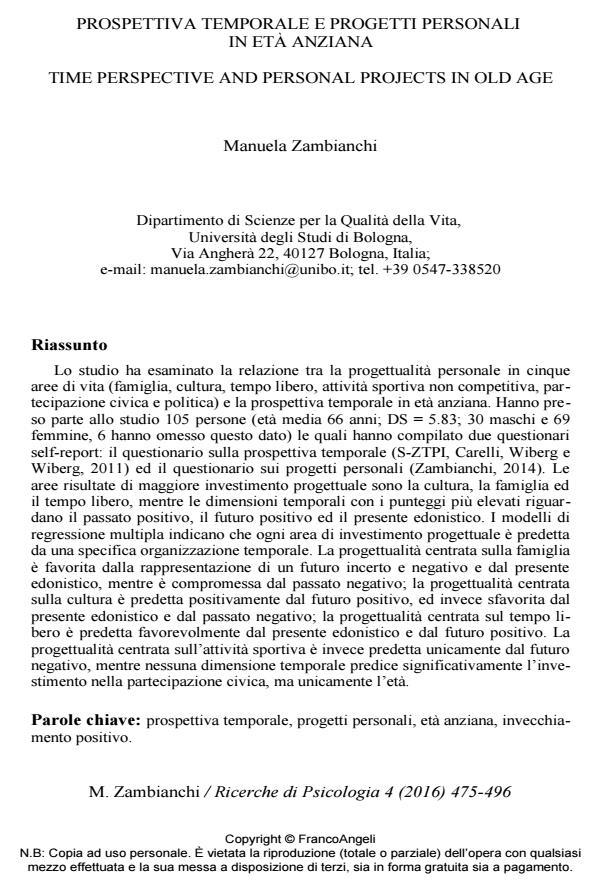Time perspective and personal projects in old age
Journal title RICERCHE DI PSICOLOGIA
Author/s Manuela Zambianchi
Publishing Year 2017 Issue 2016/4
Language Italian Pages 22 P. 475-496 File size 240 KB
DOI 10.3280/RIP2016-004002
DOI is like a bar code for intellectual property: to have more infomation
click here
Below, you can see the article first page
If you want to buy this article in PDF format, you can do it, following the instructions to buy download credits

FrancoAngeli is member of Publishers International Linking Association, Inc (PILA), a not-for-profit association which run the CrossRef service enabling links to and from online scholarly content.
The study examined the relationship between personal projects in five areas of life (family, culture, leisure time, not competitive sport, civic and political participation) and time perspective in old age. A sample of 105 old persons took part in the study (mean age 66 years, SD = 5.83; 30 males and 69 females, with 6 subjects that omitted this data). They filled in two self-report questionnaires: the Swedish questionnaire on time perspective (S-ZTPI, Carelli, Wiberg e Wiberg, 2011) and the questionnaire on personal projects (Zambianchi, 2014). The areas of major investment are culture, family and leisure time, while the highest temporal scores are on past positive, future positive, and present hedonistic. The multiple regression models highlight that each area of project investment is predicted by a specific temporal organization. The projects centered on family are predicted and favored by a representation of the future as uncertain and negative and by present hedonistic, while they are undermined by the past negative. The projects centered on culture are positively predicted by future positive, while they are undermined by present hedonistic and past negative; the projects centered on leisure time are positively predicted by present hedonistic and by future positive. The projects about not competitive sport and physical activity are uniquely predicted by future negative, while any time perspective dimension significantly predicts the investment on civic participation, but only age.
Keywords: Time perspective, personal projects, old age, positive aging
Manuela Zambianchi, Prospettiva temporale e progetti personali in eta anziana in "RICERCHE DI PSICOLOGIA " 4/2016, pp 475-496, DOI: 10.3280/RIP2016-004002